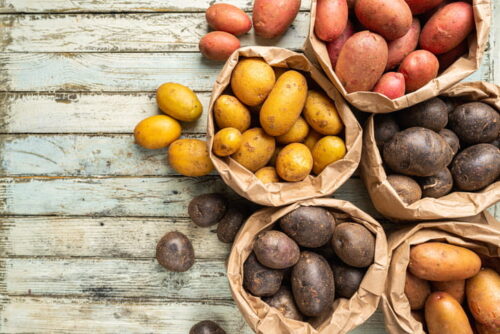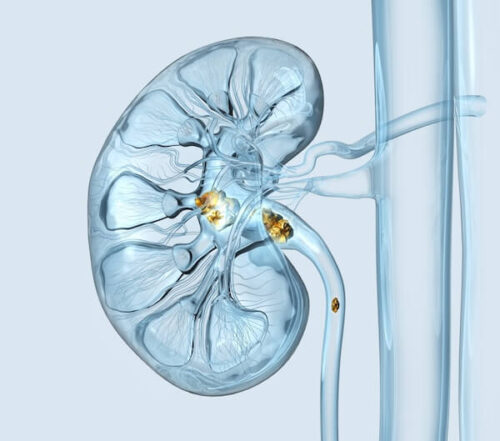A Stone-Free and Happy Gallbladder
You would never know you had a gallbladder unless it became filled with stones and angry, then you might find yourself rolling on the floor in agony – wishing you knew more about this little pear shaped sack attached to your liver’s under surface, and how to keep it healthy and happy. If your gallbladder acts up you are not alone. An estimated 20 million people have gallstones or have a history of surgery for gallstones in the United States. While most cases cause no symptoms, there are a half million-gallbladder removals (cholecystectomies) and 800,000 people are hospitalized for gallbladder disease annually. Approximately 30% of Americans over the age of 60 years have gallbladder disease. This is a $5 billion dollar a year business. Fortunately, serious symptoms and complications, such as inflammation, infection, pancreatitis, and bile duct obstruction, develop annually in only about 1% to 2% of patients.
Gallstones are solid, rock-hard formations in the gallbladder made from crystals of cholesterol. The medical term for these is cholelithiasis. In medical school we had a saying for likely gallstone candidates, ‘female, fat, and forty.’ Gallstones are more common in women and in people who are overweight. Over 90% of the gallstones found in Americans are considered cholesterol gallstones. For gallstones to be considered cholesterol stones, 70% to 90% of their material by weight must be cholesterol.
Most of the time stones in the gallbladder cause no trouble. However, problems can arise when they pass into the common bile duct or ducts to the pancreas, and then cause obstruction. This transient or permanent obstruction of the flow of bile into the intestine can result in pain, serious inflammation, infection and jaundice (a bile build up with characteristic yellow eyes and skin).
In most cases the pains seem to come and go and are most often experienced just after eating a meal high in fats. The pain is usually in the right upper portion of the abdomen and may extend through to the right shoulder blade. Nausea and vomiting are common and fever may develop with infection. The diagnosis is usually made by a sound wave test, called an abdominal ultrasound. Echos from the sound waves show shadows of stones in the gallbladder. Other tests may be required for diagnosis and to determine the best course of treatment.
The Innocent Gallbladder
The gallbladder is a small pear-shaped collection sack attached to the underside of the liver. Yellow-greenish bile produced by the liver is diverted into this sack for storage between meals. This bile consists of bile salts, electrolytes, bilirubin (a blood pigment), cholesterol, fats, drugs, waste products, as well as other substances. Cholesterol in the bile comes from the cholesterol we eat and the cholesterol the body makes. Bile salts are synthesized from cholesterol in the liver. Soon after eating, the gallbladder contracts and the collected contents squirt into the intestine — so the bile can mix with and digest fats and other components of the food.
Raising Your Risk for Gallstones
For gallstones to form the bile must be supersaturated with cholesterol. Next the cholesterol must precipitate into crystals and the crystals must grow into stones. Super-saturation is due to excessive cholesterol secretion by the liver.
There are several factors that help predict the risk of finding gallstones:
Age: Gallstones are four to 10 times more frequent in older than younger people. As people get older there is an increase in cholesterol secretion and an increase in supersaturation of the bile. With increasing age there is also a greater amount of exposure to the diet, hormones, and other factors that cause gallstones.
Genetic: This is unlikely to be of major importance since 40% of people over the age of 50 years have gallstones – most people must have the ‘stone-forming’ genes.
Estrogens: Being female increases your risk of gallstones. Women have almost twice the incidence of gallstones as men have. Estrogen promotes the secretion of cholesterol into the bile. Hormone replacement therapy for menopause, birth control pills and the later months of pregnancy are associated with an increase in the risk of gallstone formation, all for the same hormone-related reasons.
Obesity: The fatter a person is the greater the amount of cholesterol that is secreted into the bile. This is due to excessive cholesterol synthesis by overweight people.
High Fat / High Cholesterol Diet: Cholesterol stone formation is common in Western countries where people eat lots of fat and cholesterol and too little dietary fiber. Persons with gallstones divert a large amount of their dietary cholesterol into their bile – leading to supersaturation and gallstone formation. Cholesterol overfeeding is the primary way to induce supersaturation of the bile and produce gallstones in animal models. A large volume of population data supports this dietary link:
1) Worldwide, the higher the consumption of fat the greater the incidence of gallstones in a population. Gallstones are rare in African and Asian countries.
2) American Indians who have recently learned the American diet have a high incidence of gallbladder disease; for example, 70% of the Pima Indian women over 25 years old have stones.
3) Since World War II the diet has become richer in fat and cholesterol in Western Europe and the incidence of gallstones has also increased.
4) Prior to WW II in Japan, cholesterol gallstones were rare. These days with the Westernization of the Japanese diet these stones are becoming common.
5) Vegetarians rarely develop gallstones.
Constipated Unhealthy Stool: People with gallstones have a slower movement of the remnants of food through the large intestine. Compared to non-stone formers, people with gallstones have a 20-hour longer transit time through their whole intestine – they have what is called ‘slow transit constipation.’ The slow movement of bowel contents allows for more absorption of one form of bile acid that is associated with stone formation (deoxycholic acid). Therefore, consumption of highly refined carbohydrates (with low dietary fiber content) – like white flour and sugars — increases the risk of stone development.
Low Vitamin C Intake: Vitamin C deficiency in guinea pigs leads to cholesterol supersaturation of the bile and formation of cholesterol gallstones. In a recent experiment on 16 gallstone patients were treated with 500 mg four times a day with vitamin C for 2 weeks and conditions in the bile that lead to gallstone formation were favorably influenced to prevent gallstones. Knowing that plant foods are loaded with vitamin C helps you understand another reason a plant based diet is the key to preventing gallstone formation.
Rapid Weight Loss: In obese people rapid weight loss is associated with an increased risk of gallstones, because of a sharp increase in cholesterol secretion into the bile.
Alcohol: Moderate alcohol intake may protect against gallstone formation by reducing cholesterol saturation of the bile.
Weight Loss and Gallstones
Even though losing weight is important for better health in overweight people, it can cause them to form gallstones. Within 16 weeks of low-calorie dieting about 10% of people develop gallstones and more than 30% of people have stones within 12-18 months after gastric by-pass surgery (an extreme weight loss measure). And about two-thirds of these people have symptoms. Since stone formation is mostly due to supersaturation of bile with cholesterol — with fat loss, stored cholesterol is released in large amounts from the body fat into the bloodstream and is then secreted into bile. Stones are more likely to occur under the following conditions:
1) the dieter started very obese
2) the loss of weight is greater than 24% of initial body weight
3) the rate of weight loss is greater than 1.5 kg (3 pounds) per week
4) the diet is very low in calories and with little fat, and / or
5) the person started with a high serum triglyceride level.
The McDougall Program Restores Your Health
I have seen gallstones in people who have started our very low-fat diet, but the actual number of people over the past 25 years has been very small (a dozen at most) — much less than the 10% (and 6% with symptoms) predicted by studies of other weight loss programs. I believe this lower risk is because our diet has no cholesterol, which reduces the risk of supersaturation, and the weight loss per week is about 2 pounds, rather than greater than 3 pounds seen in stone-formers. Most people I have seen with gallbladder trouble have strayed from their low fat diet, say with a fat-filled restaurant meal or two and as a result preexisting problems with their gallbladder have been exacerbated. My recommendation to eat to the full satisfaction of your appetite will keep your weight loss (and cholesterol release from your fat) at a safe level and help prevent gallbladder trouble. Furthermore, the time-honored treatment of gallbladder pain if it does develop is a very low fat diet – which will relieve the symptoms in almost all patients.
For now, understand that the fear of the very small risk of developing gallstones should not deter any person from regaining their lost health and appearance. A healthy future for your gallbladder, liver, arteries and the rest of your body will be your long-term benefit from changing to a starch-based diet with the addition of fruits and vegetables.
Next month you will learn that even if you have gallstones your best course of action is to leave them alone – in other words avoid surgery, unless you find yourself in pain that cannot be relieved by healthy eating.
References
1) Tseng M. Dietary intake and gallbladder disease: a review. Public Health Nutr. 1999 Jun;2(2):161-72.
2) Everhart JE. Prevalence and ethnic differences in gallbladder disease in the United States. Gastroenterology. 1999 Sep;117(3):632-9.
3. Friedman GD. Natural history of asymptomatic and symptomatic gallstones. Am J Surg. 1993 Apr;165(4):399-404.
4) Strasberg S. The pathogenesis of cholesterol gallstones a review. J Gastrointest Surg. 1998 Mar-Apr;2(2):109-25.
5) Pixley F. Effect of vegetarianism on development of gall stones in women. Br Med J (Clin Res Ed). 1985 Jul 6;291(6487):11-2.
6) Kratzer W. Gallstone prevalence in relation to smoking, alcohol, coffee consumption, and nutrition. The Ulm Gallstone Study. Scand J Gastroenterol. 1997 Sep;32(9):953-8.
7) Dowling R. Review: pathogenesis of gallstones. Aliment Pharmacol Ther. 2000 May;14 Suppl 2:39-47.
8) Gustafsson U. The effect of vitamin C in high doses on plasma and biliary lipid composition in patients with cholesterol gallstones: prolongation of the nucleation time. Eur J Clin Invest. 1997 May;27(5):387-91.
9) Erlinger S. Gallstones in obesity and weight loss. Eur J Gastroenterol Hepatol. 2000 Dec;12(12):1347-52.
10) Yang H. Risk factors for gallstone formation during rapid loss of weight. Dig Dis Sci. 1992 Jun;37(6):912-8.
11) Ko CW. Biliary sludge. Ann Intern Med. 1999 Feb 16;130(4 Pt 1):301-11.
Recommended Articles

How to Cook Potatoes

The Truth About Oxalates & Kidney Stones






